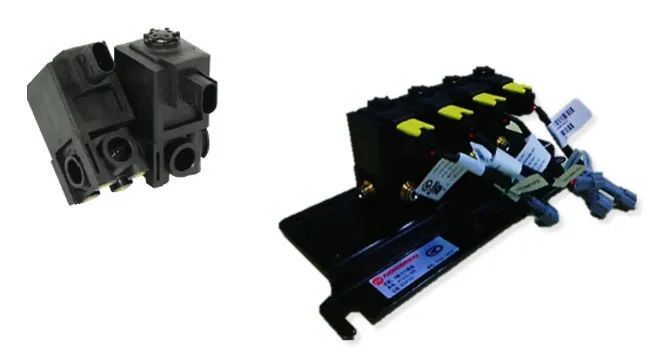Introduction to the 223.991.01 Seitz Sealing Electromagnetic Valve
223.991.01 Seitz sealing solenoid valveIntroduction

The 223.991.01 Seitz sealing solenoid valve is an industrial device used for electromagnetic control. It is a basic automation component for fluid control. It is not limited to hydraulic or pneumatic actuators. It is used in industrial control systems to regulate parameters such as the direction, flow, and speed of the medium. Solenoid valves can achieve the desired control by combining different circuits, ensuring control accuracy and flexibility. There are many types of solenoid valves, and different solenoid valves function in different positions within the control system, with common types being check valves, safety valves, directional control valves, and flow control valves.
The solenoid valve has a closed chamber with a hole opened at different positions, each hole connected to different oil pipes. In the middle of the chamber is a piston, with two solenoids on either side. The side of the magnetic coil facing the electrical component will be attracted, controlling the movement of the valve to open or close different oil discharge holes. The oil discharge holes are always open, allowing hydraulic fluid to enter different pipelines, which then pushes the piston of the cylinder through the pressure of the oil. The piston drives the piston rod, which in turn drives the mechanical device. Thus, mechanical movement is controlled by regulating the current to the solenoid.
When powered on,223.991.01 Seitz sealing solenoid valvethe electromagnetic force opens the pilot hole, causing the chamber pressure to drop rapidly, creating a pressure difference around the upper and lower parts. The fluid pressure pushes the closing part upward, opening the valve; when powered off, the spring force closes the pilot hole, and the inlet pressure rapidly forms a low-to-high pressure difference around the valve through the bypass hole chamber, pushing the closing component downward to close the valve. The upper limit of the fluid pressure range is high, and it can be installed arbitrarily (customized), but it must meet the fluid pressure difference conditions. Solenoid valves are divided into six major branches based on differences in valve structure, material, and principles: direct acting diaphragm structure, step direct acting diaphragm structure, pilot diaphragm structure, direct acting piston structure, step direct acting piston structure, and pilot piston structure.
The selection of solenoid valves must first adhere to the four principles of safety, reliability, applicability, and economy. Secondly, it should be selected based on six aspects of the site conditions (i.e., pipeline parameters, fluid parameters, pressure parameters, electrical parameters, action mode, and special requirements). Solenoid valves should be made of plastic and stainless steel; for highly corrosive media, isolation diaphragm types should be selected. For neutral media, the valve body material of the solenoid valve should also preferably be copper alloy; otherwise, the valve body may frequently rust and fall off, especially in cases of infrequent operation. Copper should not be used for ammonia valves. It is necessary to select products with appropriate explosion-proof ratings, and waterproof and dustproof varieties should be chosen for open installations or dusty environments.
Related News
What impact does the F011068 Norgren valve group pilot valve have?
2022-12-23 11:19
What is the function of the 191.019.01 Saichi SEITZ pilot valve?
2022-09-20 13:37

